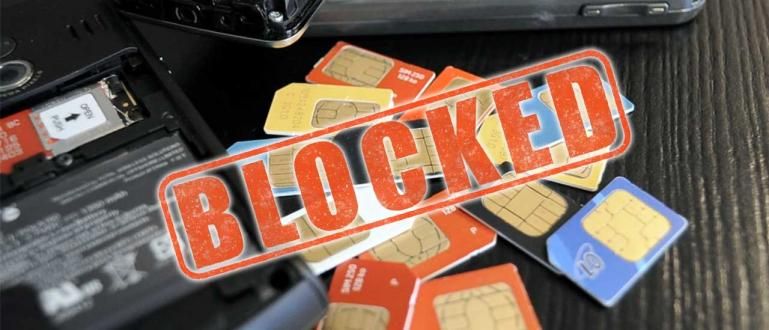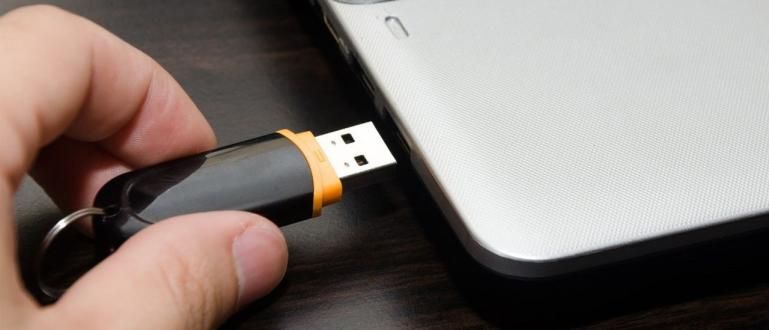Solar Charger is a device for charging that utilizes sunlight as its energy source. Before deciding to buy, pay attention to these 6 things first!
People who are active outdoor it seems impossible to survive only by relying on the default battery and charger from the gadget he bought. Even a power bank that is quite useful sometimes feels unsatisfactory. Because, not infrequently we forget, are lazy, or don't have time to charge it until it's time for us to leave. It's like that, sometimes the power runs out too quickly even though we still need to stay outside. Well now, there is a new solution that sounds more promising: HP solar charger.
True to its name, Solar Charger is a tool for charging which uses sunlight as a source of energy. No need for an electric plug, so it's practical to use anywhere as long as you can get sunlight. But because it is still a new technology, people tend to be confused about how to buy this product. Does it have to be expensive to get useful features? Or is the cheap one enough to meet the needs? The good and bad quality of HP solar chargers can be seen from the following features:
- 5 Easy Ways To Distinguish Original and Fake Chargers
- Should I Unplug the HP Charger When Not In Use?
- Dangers of Charging Smartphones Using Other Chargers (Not Default)
6 Things You MUST Pay Attention to Before Buying a Solar Charger
1. Surface Area (Surface Area)

Photo source: Photo: shopify
The absorption of sunlight to be converted into battery power is through the surface of the solar panel (solar cell). The wider the surface, of course, the more sunlight that can be captured, so the greater the amount of power generated.
Solar chargers are sold in various sizes. If only for charging smartphone, maybe a solar charger whose area is only slightly wider than a cell phone is enough. But if you plan to go to the mountains with a laptop, you need a wider solar charger.
2. Power (Watt)

Photo source: Photo: blogspot
Surface area solar cell is not the only thing that determines whether the charger is good enough for your gadget or not. You also have to pay attention to how many watts the product has. Forget about a panel that only has 4-5 watts of power because it's only capable of charging an MP3 player or regular cellphone.
For a smartphone or tablet, buy the one minimum 7 watts. If you intend to use it for several gadgets at once or for a laptop, look for a panel that has power minimum 15 watts.
If you are thinking of buying a solar charger for HP with a small power just because the price is cheaper, you should prepare a stock of patience in your heart. Because even though it can still be used for chargingUsually, the charger will take longer to be able to fully charge the gadget's battery.
3. Output Current (Amperes)

Photo source: Photo: easy acc
Current output is the flow of electricity that comes out of the charger to the gadget battery. It's like a water hose. The greater it is output, the faster the charger can fill the battery capacity. But that doesn't mean you have to buy a solar charger with current output as much as possible.
Because each gadget has its own maximum current input. If output charger is larger than the input device, then the incoming current will still follow the maximum size at input devices.
Before buying a solar charger, first check the amount of input on each gadget that you will use. Adjust the size to the current output generated by the solar charger. When output the charger is smaller than the input gadget, so time charging will be longer due to the electric current that flows must be little by little.
4. Battery

Photo source: Photo: Alibaba
Because it uses sunlight, you can't generate power at night, because the sun is no longer shining. The solution, many HP solar chargers are equipped with batteries built-in so it can store backup power just like a power bank. This product is also often referred to as solar power bank. So if your mobility is high enough at night, also pay attention to the battery feature built-in which is offered.
What you need to look at the most is the capacity (mAh). Also check the battery capacity of each gadget that you use to calculate how many times this charger can be used when it is fully charged. The second concern is the type of battery. In essence, this consideration is more or less the same as the consideration of choosing a powerbank.
5. Types of Solar Panels
Just like batteries, solar panels also have various types. Each has its own advantages and disadvantages. Here's a brief explanation of several types of solar panels so you can guess which one is more suitable for your needs:
CIGS

Photo source: Photo: outdoorgearlab
Panels made of CIGS usually thin and light so that it seems practical to carry everywhere. Its flexible shape makes it easier for you to spread it on even a non-flat surface. The price is also the cheapest because the manufacturing process is cheap.
This panel also has the highest effectiveness for charging with low sunlight so you can still charging when the weather is cloudy. Unfortunately, these panels are not durable and easily damaged. The laminated plastic layer peels off easily after some time.
Monocrystalline

Photo source: Photo: prepsos
Monocrystalline more durable than CIGS. This may be suitable for those of you who tend to be careless in caring for things. However, the panels are thicker and heavier than the CIGS. The shape is rigid, but is usually installed in small sizes on a sheet of cloth so that it can be more flexible in use. In low lighting conditions, the work of this panel is slightly less effective than the CIGS panel.
Polycrystalline

Photo source: Photo: Alibaba
Polycrystalline actually not much different from monocrystalline. The difference is only in this type used more than one metal crystal. It is easier and cheaper to manufacture so that the selling price of the solar charger tends to be more affordable.
It's just that because the silicon is not pure, the efficiency of this panel is not as good as monocrystalline. In comparison, the efficiency of monocrystalline panels is 22% while polycrystalline is only 18%. This figure is usually not very significant for small-scale applications such as charging cell phones and the like.
6. Warranty

Photo source: Photo: Blogspot
Avoid buying HP solar chargers that have no warranty at all, especially if they are cheap. It could be a fake product that is easily damaged or of poor quality. A warranty HP solar charger can be a sign that the manufacturer dares to guarantee the quality of the product. Even though the brand is well known and review Even positive, you should not buy if the product is not accompanied by an official warranty because it could be just a KW product or an imitation.
So, those are 6 things that must be considered before you buy a solar charger for your smartphone or gadget. Don't forget to leave your opinion in the comments column!









